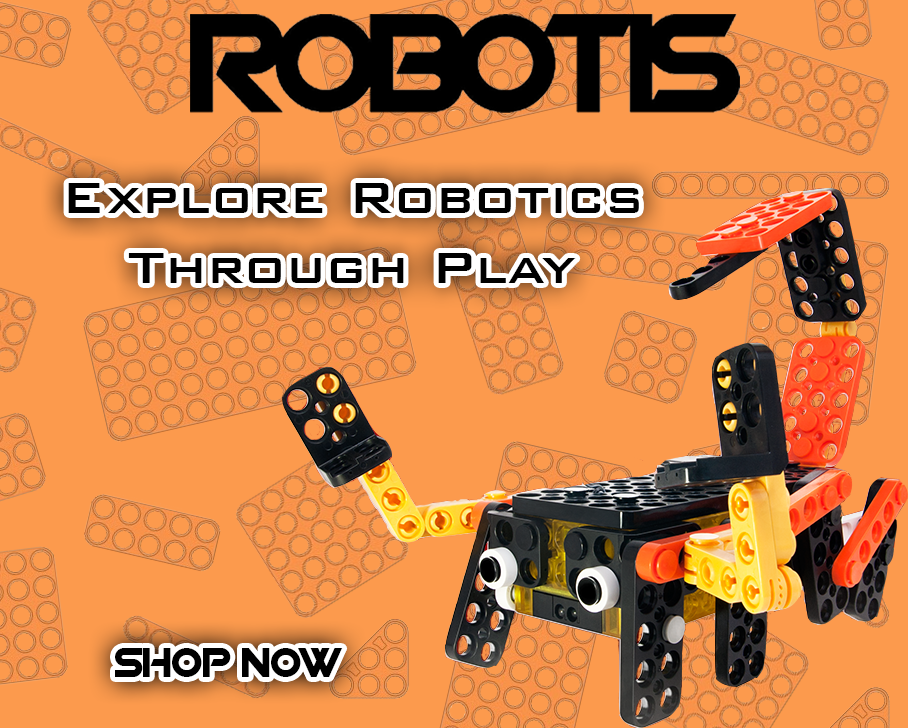For those of you that are not familiar with Robotis, it has been building a following for decades centered around increasingly refined servomotor designs. Trade named Dynamixel servos are the engines that control robotic motion. The Dynamixel servo is a highly integrated unit that simplifies building precise robotic movement into a wide variety of applications. Within a single Dynamixel actuator package is a DC motor, reduction gearhead, controller, driver and network connection. As a designer, this all-in-one building block frees you to focus on designing functionality knowing that a hardware solution already existing for animating your project.
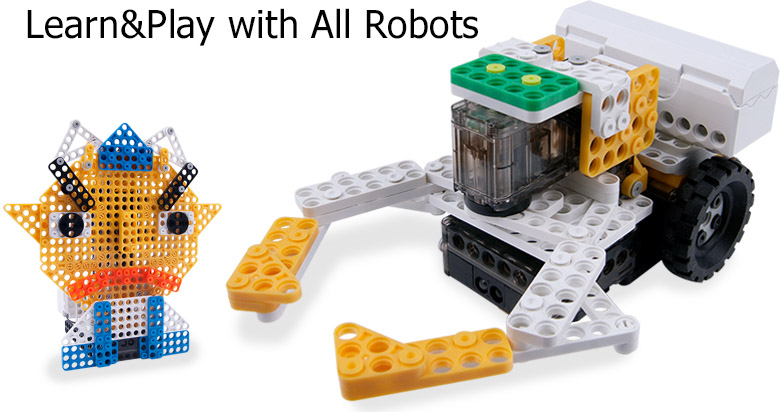

For some users, their first experience with Robotis is building any one of a number of robot kits. This is not by accident. Robotis has committed to creating a range of robotics kits that are ready to engage your curiosity regardless of your experience. Accordingly, they have created a STEAM “ladder” that helps the users climb from basic robotic concepts, at the pre-K level all the way up to kits that are suitable for innovation at the University Level. Perhaps the kit series that best embodies their philosophy of building knowledge through hands on experimentation is the Robotis Dream II series for students from age 8 to age 15. This series consists of a series of five increasingly sophisticated levels as broken down, below.
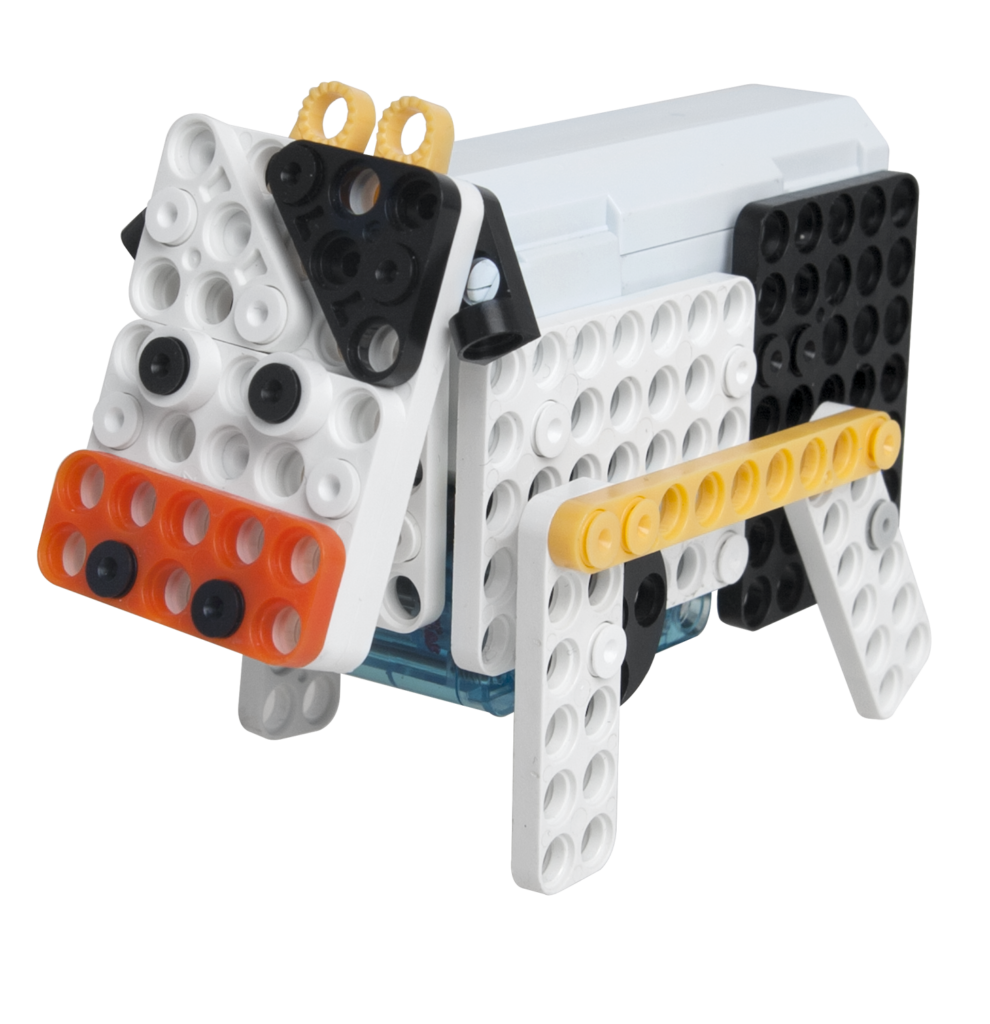
LEVEL 1: 12 lessons, 12 Example Robots
Introduction to the principles of power, center of gravity, force, and both two-legged and four-legged walking. Learn problem solving and apply your learning to building your own robot.
CURRICULUM EXAMPLE: Think about walking movement, both for people and animals. The concept of center of gravity and how it moves to keep balance. How do insects move, build robotic animals to study movement or run a race. Learn how gravity affects movement when traveling up or down slopes.
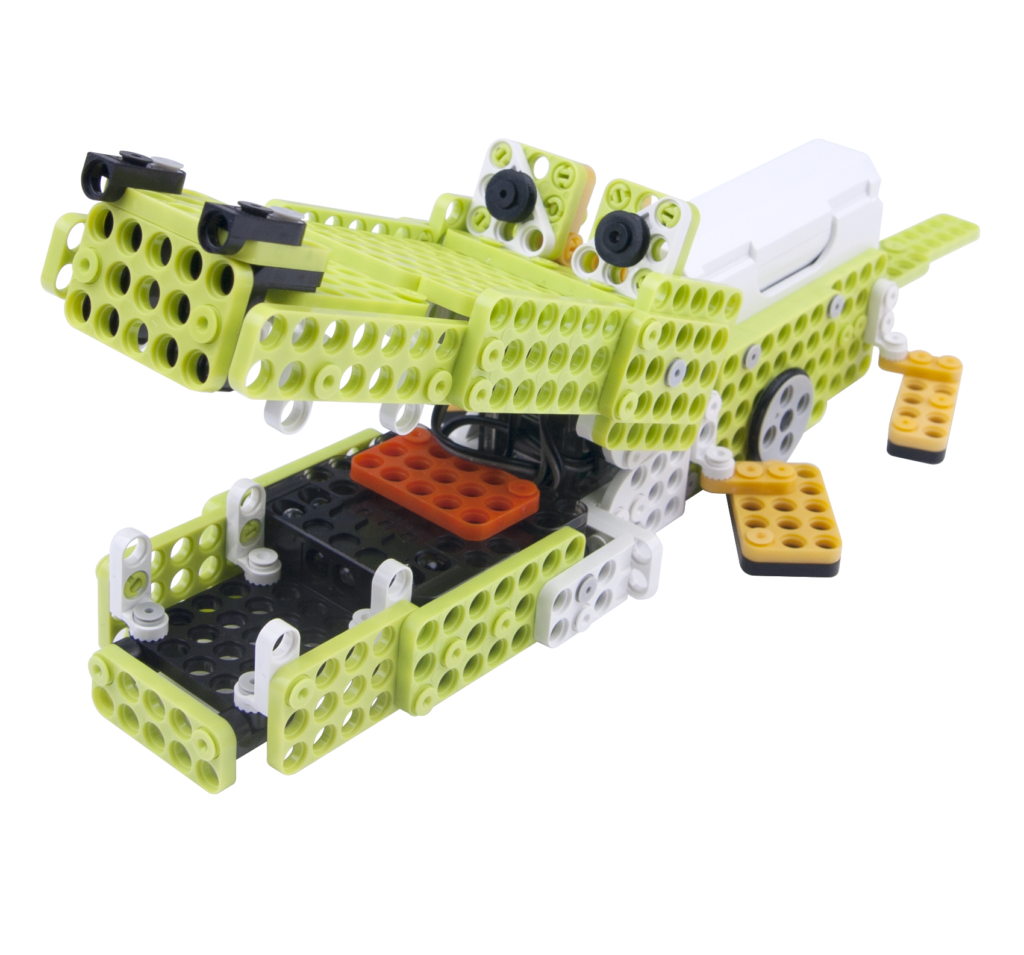
LEVEL 2: 12 lessons, 11 Robots (Requires parts from level 1 Kit)
Level 2 teaches the basics about the structure of robots, IR sensors, and microphone sensors. It also teaches the principles of speed, elasticity, inertia, acceleration, and resultant force.
CURRICULUM EXAMPLE: Walking versus rolling movement, build a scorpion robot . It uses an IR sensor to trigger “sting” motion. Also, introduces the concept of a humanoid robot.
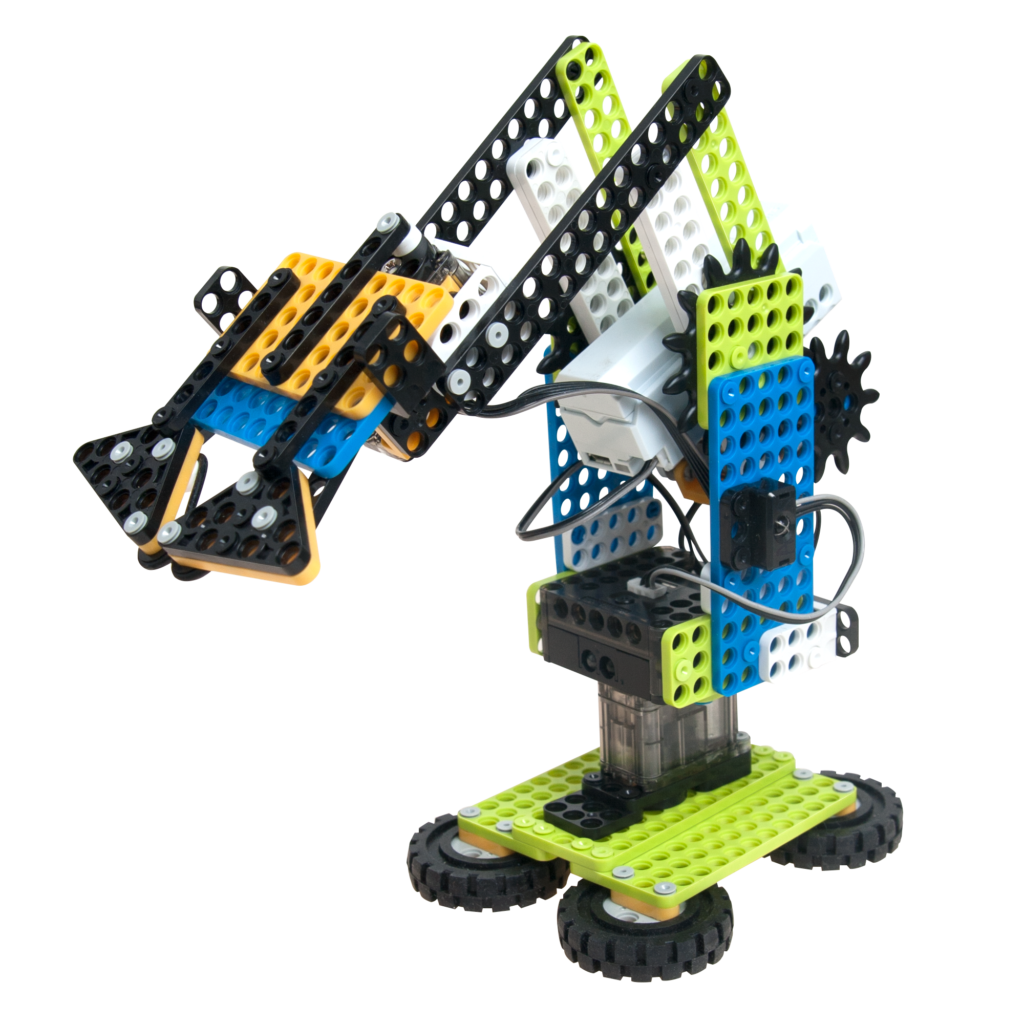
LEVEL 3: 12 Lessons, 12 Robots (Requires parts from Level 1 and 2)
This level builds upon Level 2 to develop a more sophisticated understanding of robotic principles of motion as introduced in Level 2.
CURRICULUM EXAMPLE: Introduce the concept of friction and how it helps us move by providing a reactive force. Build a motorcycle and connect it to a game console for control. Maneuver the motorcycle around obstacles and parallel park.
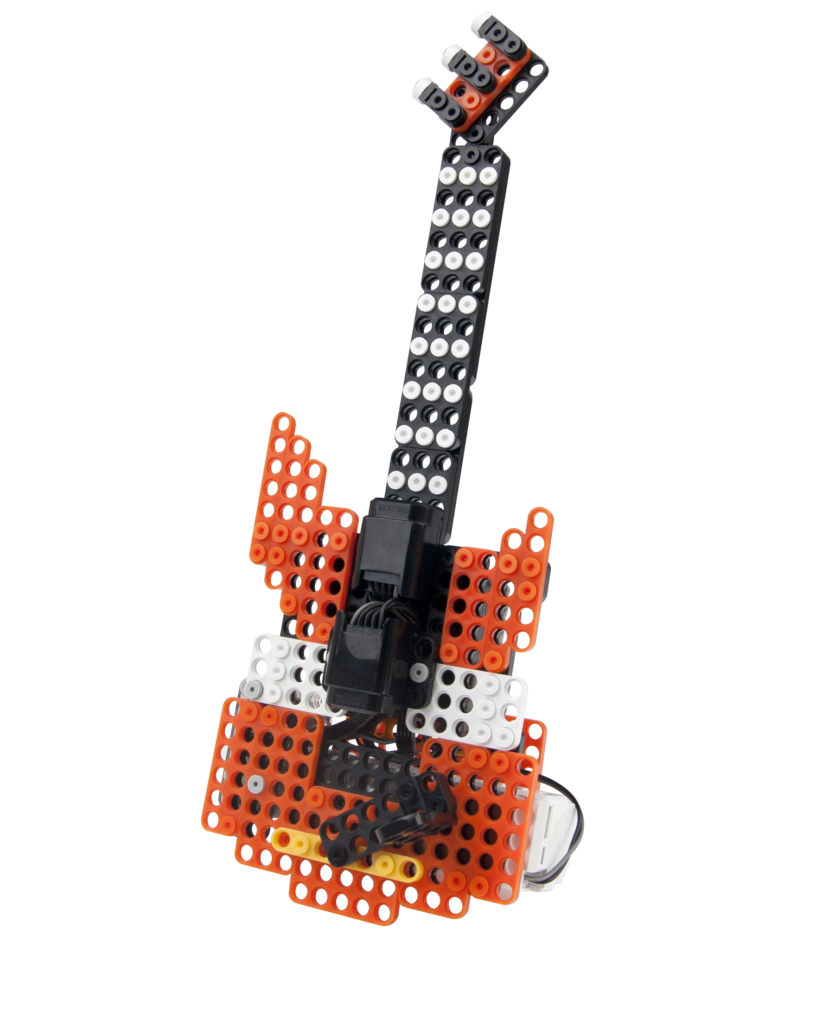
LEVEL 4: 12 Lessons, 12 Robots (requires parts from Levels 1, 2, and 3)
This kit comes with a controller and teaches the principles of servo motor control, use of touch sensors and IR sensors, as well as LED modules. At this level, flow charting concepts are introduced as groundwork for programming. Experimentation is encouraged to find ways of operating your robot using the variety of sensor inputs. Game play is encouraged to experience how the sensors can be used in various ways.
CURRICULUM EXAMPLE: Introduces a microphone as a sound sensor to initiate an action. A flow chart of the program shows the use of a counter. Build a model of a “Viking”. Clapping your hands will make the Viking walk. With multiple claps the Viking will swing his axe, once for each clap.
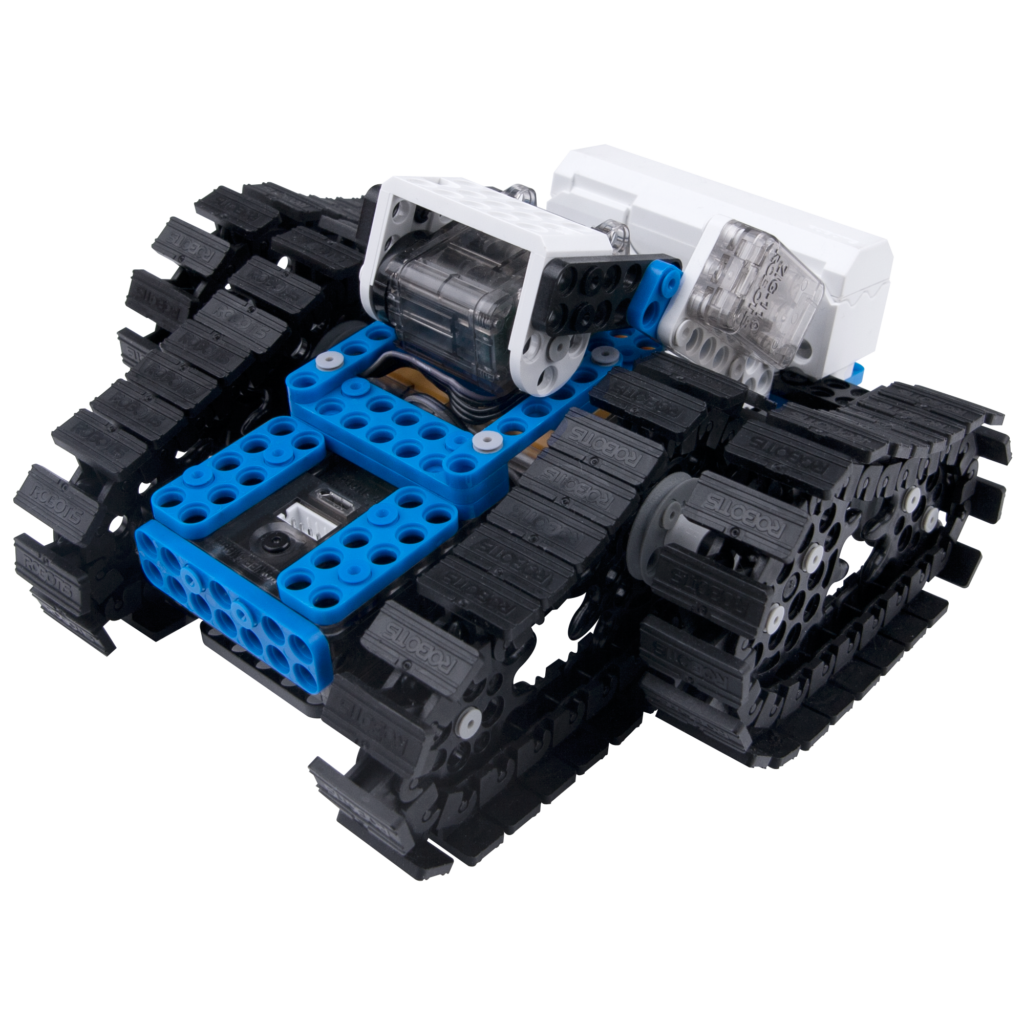
LEVEL 5: 12 Lessons, 12 Robots (requires parts from levels 1, 2, 3, and 4)
This level also includes a remote controller. The student builds on the flow chart idea to build a basic knowledge of programming. At this level students can learn what it takes to participate in competitions. Play games using the programs provided for download on the Robotis web site and keep a record to see how well you do. Experience how various sensors can improve your results.
CURRICULUM EXAMPLE: Build a bulldozer robot that uses a game controller console for control. Introduces the concept of standards for physical and electrical connection and how that makes parts interchangeable and allows for interconnections.
This “Dream II” five-series set is just one set of well-integrated robotics concepts. Robotis has built an easily accessible “on-ramp to robotics” that can take a student from Pre-K to the University level and on into the professional world of robotic design. In doing so, they have built an engaging, challenging and fun way to ensure we’ll have plenty of STEAM-educated students to build for future generations.
